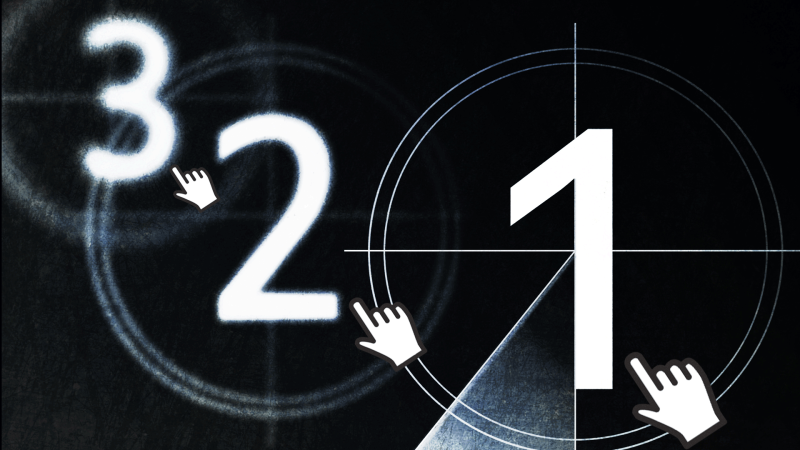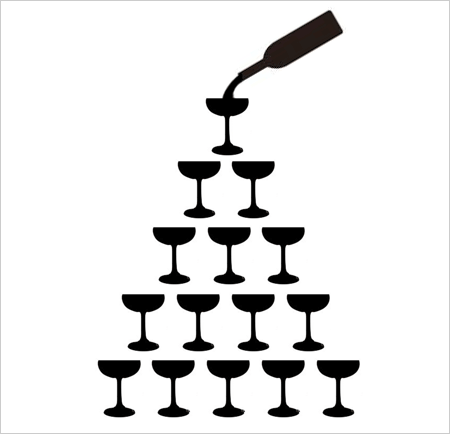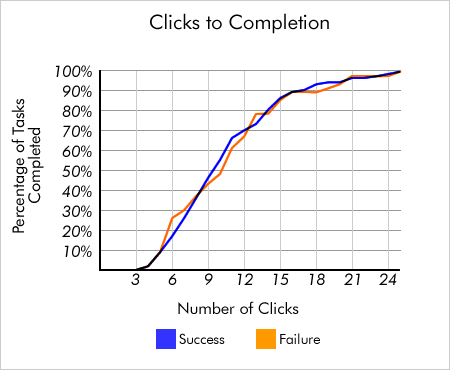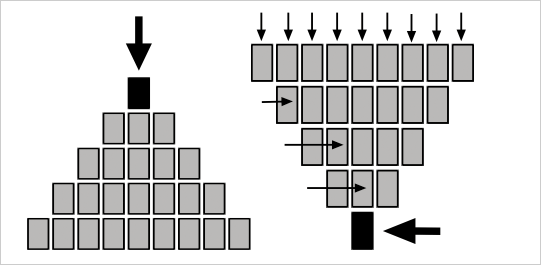User Experience Myth Or Truth: The Three-Click (Or Tap) Rule
- Fahad H

- Oct 24, 2014
- 5 min read

As a web professional, I believe in ongoing education and training.
I attend industry conferences, webinars, and other events on the topics of usability, web design and development, information architecture, and even search, to ensure that I thoroughly understand fundamentals.
I also like to learn the latest-and-greatest techniques for future usability testing.
For some time now, as I’m out in the world keeping up to date on the state of the art, I hear and read some user experience (UX) and findability myths that just won’t be put to rest. One of them is the Three-Click Rule.
Have any of you heard about this website navigation guideline?
What is the Three-Click Rule?
The Three-Click Rule is an unofficial website navigation rule that suggests that users should be able to find any information within a website using no more than three mouse clicks.
Many user experience (UX) professionals believe that users of a site will become frustrated and leave if they cannot find desirable content within the three clicks. Therefore, if a website follows this three-click rule, navigation is more efficient.
In addition, search engine optimization (SEO) professionals have latched onto this rule and suggest that a website’s most important content be no more than three clicks away from the home page. SEOs commonly believe that a website’s home page is the most important page on the site, i.e. the page that gets the most “link juice.”
One analogy I’ve seen and heard is a champagne-glass pyramid. According to some SEO professionals, “link juice” flows down into a website like the champagne flows down a champagne pyramid—the champagne glasses at the top of the pyramid get more champagne (“link juice”) than the champagne glasses at the bottom of the pyramid.

Figure 1: Champagne pyramid analogy. According to some SEO professionals, “link juice” flows down a website’s hierarchy like champagne flows down a champagne-glass pyramid.
What do you think Marketing Land readers? True or false? Do you know any web professionals who genuinely follow this rule?
An Information Architect’s Answer
Oh, how I wish a multitude of web professionals would simply take an Information Architecture 101 class. This rule is so false. Here are some reasons why.
1. Information Scent Is More Important To Users Than The Number Of Clicks
For those of you who are unfamiliar with information scent, it consists of textual and graphical cues that communicate:
Where am I? (current location)
Where can I go and how can I get there? (clear navigation and clickability/tappability)
Should I click on this link? (content value)
Where have I visited before? (previous paths/pages viewed)
If information scent is strong and increases, users will continue to click or tap. If information scent diminishes or disappears, users might abandon the path or task.
Back in 2003, the folks at User Interface Engineering (UIE) determined that people will click up to 25 times if information scent is strong or increases (see Figure 2 below).

Figure 2: Clicks to Completion graph from Testing the Three-Click Rule from User Interface Engineering. Used with permission.
Of course, the folks at User Interface Engineering and I do not recommend forcing users to click (or tap) 25 times to complete their desired tasks. After all, efficiency is a critical component of website usability.
But if it takes more than three clicks or taps to complete tasks? And if information scent is strong? Don’t sweat it. It probably will not harm usability. It probably won’t harm findability. It certainly will not harm SEO if your website has an effective and efficient navigation system.
For those of you who are interested in reading detailed information about the scent of information, please read more about Peter Pirolli and information foraging theory.
2. Link Equity Flows In More Than One Direction
SEO professionals new to the industry might not be aware of Inceptor’s Pyramid. Inceptor was a search firm that was purchased by Did-It.com, and Inceptor’s SEO professionals used to present at many search conferences worldwide.
Here is a diagram of Inceptor’s Pyramid.

Figure 3: Inceptor’s Pyramid.
Back in the 1990s and early 2000s, many web professionals mistakenly believed that the main point-of-entry into a website was the site’s home page. Web search engines changed that.
Now, there are multiple points of entry into a web site origination from a commercial web search engine. Web searchers can do an informational query and land directly on a category page, a product page, or an article page, for example, instead of always beginning at a website’s home page.
Furthermore, link development did not begin and end at a website’s home page. People can link, bookmark, share socially and cite content directly rather than instructing people to navigate from the home page. In fact, I can tell a site is well optimized based on web analytics data and a link analysis graph. More and more, people tend to link to and cite internal pages than the home page.
What I particularly like about Inceptor’s Pyramid is that it shows unexpected insights. Suppose the arrows in the inverted pyramid in Figure 3 are well-cited landing pages with desirable content. Link equity will flow from those pages as well as the home page.
3. A Wayfinder Sitemap Would Be The Magic Solution, But It’s Not
To many, a Wayfinder sitemap is a single web page consisting of blue, underline text links that contains a semi-organized list of every URL to a web page on a single web site. Of course, I know that an effective Wayfinder sitemap has more characteristics than this, but let’s just use this definition for the sake of simplicity.
Guess what? If you put a link to this wayfinder site map in the global footer of your website, then you will magically solve the Three-Click Rule! Think about it! Click the link to the site map, locate the desired content, click on the link—one, two, three clicks—voila! Problem solved!
I apologize for my sarcasm, but to be perfectly honest, I have seen this “magic solution” many, many years ago. For example, there was a time when search engines had a difficult time crawling URLs with multiple parameters, such as:
www.example.com/products.aspx?product_no=12342&product_sortorder=asc
In this example URL, there are two parameters: the product number and the sort order. Now, search engines can access URLs with multiple parameters, but search engines are not programmed to access many of these parameters due to duplicate content delivery and other reasons.
One magic solution back in the day was simply a Wayfinder sitemap with links to every page in the site. There you go: Effective Navigation = Three-Click Rule, right?
Wrong. It didn’t work then. It doesn’t work now. If this Three-Click Rule were truly valid, the wayfinder site map would solve multiple site navigation and SEO issues.
Caveat: There are genuine usability and findability guidelines for an effective site index and a sitemap. I use these Wayfinders on websites all of the time. Don’t use these Wayfinders as band-aids for an ineffective navigation system.
On-Page Criteria Is Still Important For Usability & Findability
As an information architect, I understand the importance of an effective navigation system and corresponding search functionality. They are intricately related.
If you have an effective navigation, labeling, and archiving system, your site search results can be more accurate. Additionally, you might find that your website’s SEO is more effective. I learned that a long time ago as both an information architect AND an SEO professional.
It all begins with your users. Understand and accommodate their mental models. Understand their tasks and how they go about completing them. Use the users’ language. Understand their context. Then? You might have a website that is worth its weight in gold.
And finally, stop believing the hype. According to Wikipedia, the origin of this misguided navigation rule appears to come from designers.
Okay, web designers? Become better web designers and learn about information architecture, findability, and effective navigation systems. SEO professionals? Become better SEOs and do the same. Conversion optimizers? Well, I think both usability and findability classes would help you understand your users better.
Here are some resources:
Information Architecture for the World Wide Web, 3rd edition (book) by Louis Rosenfeld and Peter Morville
Designing Web Navigation (book) by James Kalbach
Search Patterns: Design for Discovery (book) by Peter Morville and Jeffery Callender
Card Sorting: Designing Usable Categories (book) by Donna Spencer
Myth #2: All pages should be accessible in 3 clicks by UX Myths








Comments